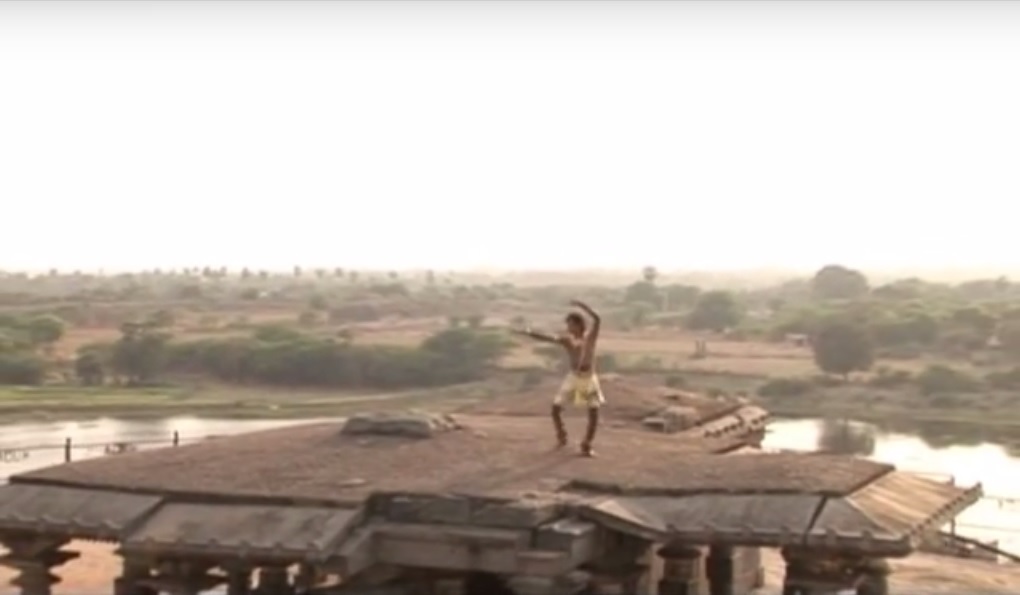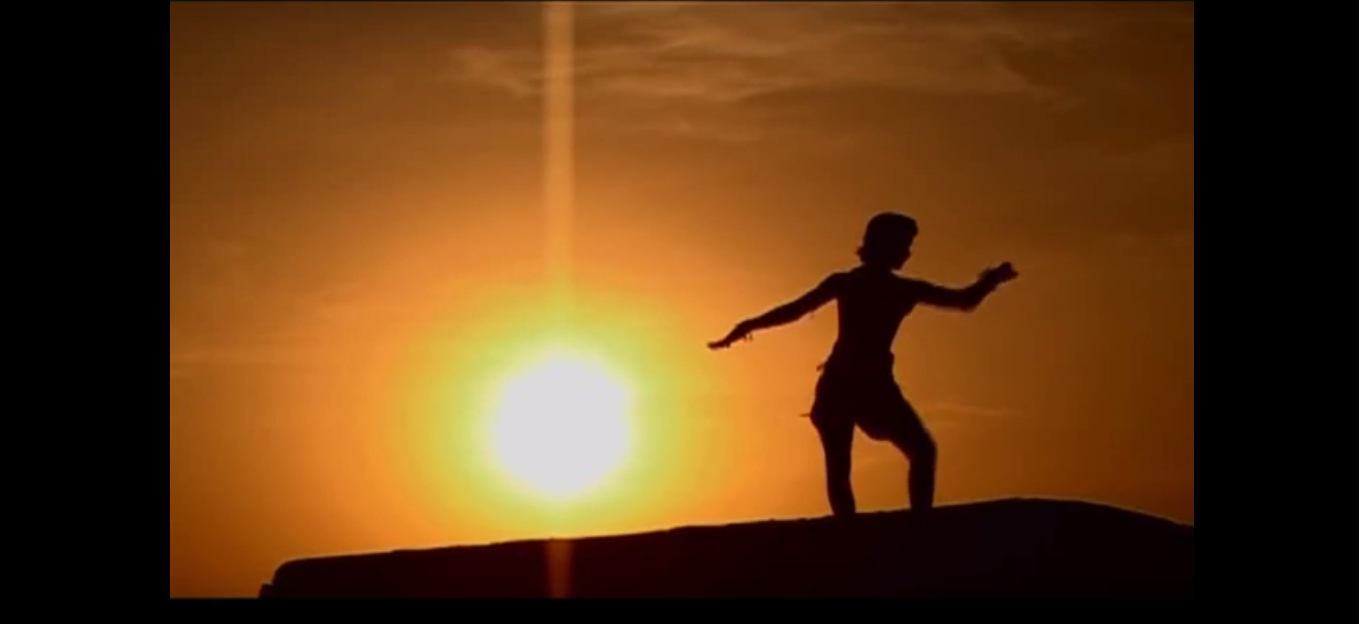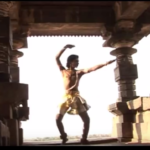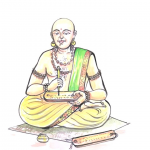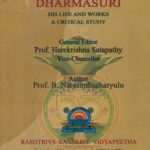Last month, we discussed the eminent dance maestro and warrior-general Jaya Senapati. As a companion article, this month, we present an overview of his celebrated treatise Nrtta Ratnavali.
Author
Readers can review our in-depth article on notable Andhra Personality Jaya Senapati here. For those who have already read the post, here is a quick recap.
Jaya Senapati, also known as Jayappa Nayudu, was the chief of the Elephant Corps in the army of Kakatiya King Ganapati Deva. Though he was one of around 70 Nayaks, military commandeers and feudal barons, Jayasena had an artistic side (as many of the elite did in those days).
A true aesthete, he was a sahrdaya par excellence. The embodiment of balance that our modern elite should aspire toward, he was neither a brute ruffian nor a pretentious fop, but possessed the qualities of manliness and refinement in equal balance. A General and a Dance maestro of great repute, his life demonstrates how a life of culture and a regimen of vigour on the dance floor also inspires vigour on the battlefield.
He was trained under Gundamatya in the art of Dance, that is Nrtya. Nevertheless, Jayasena had a predilection for Nrtta, that is pure rhythmic dance, and so, titled his treatise on the topic Nrtta Ratnavali. This is unsurprising as the work itself has a large section dedicated Perini Thandava, the vigourous male aspect of dance.
Composition
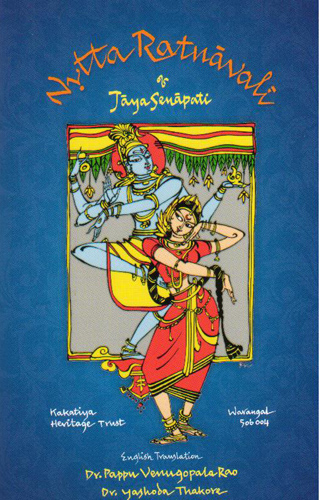
For those reading the Nrtta Ratnavali, whether in Sanskrit or English, one is immediately struck by how poetic this veritable work of Dance actually is. While it is certainly the standard to compose great treatises in Sanskrit poetic verse (sloka), to find a serious work of scholarship aspire to Kalidasan heights is indeed rare. Despite being a non-brahmin from the Dakshinapatha, this man of the deep South quite obviously appreciated the subtleties and splendour of Sanskrit and its literature.
Indeed, he held Bharatamuni in great reverence, and specifically notes that his “text is the result of repeated study of Bharata’s literary work, tedious delving into the depths of many commentaries, debating with well-disposed people adhering to the tradition of seeking from a guru, Lord Siva’s grace and unravelling of the secrets in the Sastras.” [1, 6]
This great treatise of Dance and treasure of all true Telugus, has come down to us today due to the efforts of traditional scholars. Whether you are a dancer of Perini or an admirer of Kuchipudi or simply a collector of books, here is one “must have” to any respectable collection of Andhra literary works.
Divided into 8 Chapters, it is a splendid manual on the aspect of Nrtta, an integral part of Nrtya (that is dance). It can be conceived of being in two parts. The first four chapters form part one and centre around the classical marga dance of Bharata muni. The remaining four focus on desi.
Chapter One consists of 74 verses with the traditional introduction and benediction. It moves on to provide an explanation of terminology.
Chapter Two is made up of 437 verses, and deals with various movements of the limbs.
Chapter Three deals with caaris and mandalas. He places emphasis on physical exercise. This chapter has 198 verses.
Chapter Four has 377 verses and deals with karanas and their variants. [1, xvii]
Chapter Five is the first of the Desi chapters. It has 109 verses and deals with various postures.
Chapter Six focuses on foot positions and related concepts. It has 187 verses.
Chapter Seven has 239 verses and provides an overview of the teaching methodology of dance and various desinrtyas such as perini. The author provides detailed discussion of musical accompaniment, ranging from individual vocalists to orchestras.
The final chapter has 84 verses and focuses on the audience, dancers, and musical components. [1, xviii]
The work is dedicated to Jaya Senapati’s patron, Kakatiya Ganapati Deva, whom he eulogises in every chapter’s ending sloka as “the superior King of Kings“.
Selections
Chapter One
The Nrtta Ratnavali commences with lovely slokas explaining the symbolism in dance. Sloka 2 in Chapter 1 reads as follows:
vaame bhaavaabhinayasusama alankrtaam laasya bhangee-
mardhe nyasminnudita damarum bibhratas taandavam ca|
svasvaksetravya vahrtakaraa loka dattaavadhaanaah
sambhoh kaantaa kalitavapuso drstayah paantu yusmaan|| sl.2, c.1
“May the glances of Siva, who shares his body with his consort, and exectures the laasya style, brilliant with bhaava (emotion) and abhinaya (expression) embedded on the left side of the body and the taandava style to the accompaniment of the damaru on the right side of the body, while glancing with concentration at the appropriate (hand) gestures he uses, protect you.” [1,2]
This shows the principle of Ardhanareeshwara, or the concept of the Supreme Being (and individual souls) being part male and part female. Parvati represents Shakti, the female left half, which is personified by lasya dance. Shiva represents Purusha, the male right half, which is personified by thandava. Jayasena then moves on to standard salutation to Lord Ganesha, the destroyer of obstacles, and learned in his own right.
spandanaarthatayaa dhaatornateh saatvikapooritam|
rasaasrayam catad jneyam vaakyaartha abhinaya atmakam|| sl. 26, c.1
The verbal root ‘Nata’ means pulsation-when the innermost feelings of the being are awakened and moved towards awareness.[1, 11]
This sloka is important to call out as it shows the fundamentally spiritual nature of the arts in the Indic tradition. Dance is not merely expression, but a path towards higher consciousness and awareness. This is underscored by the lasya and tandava symbolism above.
Thus, to truly be involved and a master of dance, one must be steeped not only in the “secular” but also in the sacred. This is seen not only in Natya, but in other aspects of dance. Jayappa states “when the preposition ‘abhi’ is added to the verbal root ‘nyi’and ends with ‘ac’, ‘Abhinaya’ is formed. Since the purpose is to bring forth and express, it is called abhinaya.” He goes on to write in sloka 28: “Abhinaya is the act of feeling and expressing the various meanings with clarity through the parts of the body, major and minor limbs”[1, 28]
Interestingly enough, for those interested in biological classification, Jayasena goes into various schema for classifying animals into biped, quadrupeds, and limbless. Nevertheless, he moves on with key definitions for the core aspect of his work:
Geeta-vaadyaadi-militam layamaatra-samaasrayam|
Angaviksepanam nrttam bhaved-abhinayojjitam|| sl.53, c.1
Nrtta is the movement of the limbs of the body, based solely on the rhythm (laya), accompanied by the song, instruments, etc and devoid of abhinaya[1, 18]
Laasya-taandava-bhedena dvayametadvidhaa punah|
Sukumaaram tayoradyam bhavedaparamuddhatam ||
Thes two (nrtya and nrtta) are of two kinds each, Laasya and Taandava. Of them, the former, Laasya is delicate and the latter one, taandava, is the vigorous.
The mutual feeling between man and woman is Laasa. That which is meant for laasa or which suits it is Laasya. Laasya comprises those delicate movements of the body which arouse a pleasant, erotic desire. Since Siva initiated Parvati to this, it may be performed only by women.[1, 19]
Lasya has ten parts: Geyapadam, Sthitapaathyam, Aaseenam, Puspagandhikaa, Pracchedaka, Trimoodhaakhyam, Saindhavaakhyam, Dvimoodhakam, Uttamottamakam, Uktapratyuktam. sloka 59 [1,20]
Chapter Two
Chapter two discusses the nature of the angas, meaning “limbs”.
Sanaatyayorathaangaani vaksyante nrtyarttayoh|
Siro hastaavurah paarsve kateepaadauca satkramaat|| c.2, sl.1
The Angaas or major limbs of natya, nrtta and nrtya will now be mentioned. They are head, hands, chest, sides, waist and feet-six in that order.
Greevaadohkuuksiprsthoru-janghah pratyanakaani sat|
Vilocanabhroo naaso sthakapolacubukaani sat|
Upaangaanyatha vai tesaam bhedaanvaksye salaksanaan|| c.2, sl.2
The neck, shoulders, stomach, spine, thighs, shanks-the six of these are pratyangaas. Eyes, eyebrows, nose, lips, cheeks, chin-the six of these are upaangaas. I shall now detail the different ways to use each of these and their qualities. [1, 27]
Per Bharata, Jayasena lists 13 different ways to move the head. [1, 28]
He notably bases the qualities of glances that is, drsti as being based on the rasa listed by Bharatamuni. These are further informed by glances based on the Sthayi bhaavas, the lead feelings or leitmotifs.
Unfortunately, soon after the above points, the manuscripts in possession have missing portions, in the chapter. Nevertheless, they are not so substantial as to grievously injure the text. Only 87 slokas are inserted, and within chapter 2 itself, we return to Jayana’s text starting from Osthalaksanam (movements of the lip).
Descriptions in the chapter include the various emotional states among husband and wife and the body movements and facial expressions associated with them.
Bharata or Jayasena, what is truly astounding is the sophistication and the specificity of all the eye movements described, right down to the pupil and eyelid [1, 52]. There is even description of various eyebrow movements that would put Stephen Colbert and his emoticon to shame.
Jaw, teeth, and cheek movements (Kapolalakshanam) are descriped, specifically in the manner of Bharatamuni. Even colours of the face (mukharaagah) are determined based on moods (svaabhaavika, prasanna, rechita, and syaama). [1, 71]
Particularly notable are the hand gestures described.
Catura-makaraaji prollasat-padma-kosam
Bhramara-lalita leelam hamsa-paksaabhiraamam|
Pravicalad-alapadmam karkata-dyairupetam
Jaladhikalami-vedam broomahe hastalaskma|| C.2.75
The gestures of hands are as vast as the ocean. The waters of the ocean house the wily crocodiles, lotuses on the surface and bees moving gracefully. The waters are beautified by the wings of the swans and by the dancing petals of the lotus. It is also home for animals like crab, etc.
The hand gestures are the like of Catura, Makara, Padmakosa, Bhramara, Lalita, Hasapaksaa, Alapadma, Karkata, etc. I shal now describe such hand gestures.[1, 71]
These are then expounded upon based on single hand gestures, double-hand, and nrtta hastha, totaling 64, in the manner of Bharata. [1, 74] The purpose and verisimilitude of them are also described in great detail and precision. Vivid war-imagery is also utilised (i.e. “pulling an arrow”, “wrestlers striking their shoulders and things in combat”) as well as animal movements (“move from side to side to trace the curvilenar path of the fish”).[1,84]
But Jayappa Nayaka does not merely recite Bharata like a parrot; there is originality and variation in his definitions too, as in the movement called parrot’s beak (Sukatunda), where Bharata uses a different hand. Differences are also seen with that famed Kashmiri commentator. Jayasena writes that “Aacarya Abhinava Gupta describes Nisadha hasta differently” in sloka 182 of chapter 2. [1,100]
Indeed, Jaya Senapati specifically asserts “the infinite nature of hand gestures”.[1,103] writing:
Abhineyam jagatsarvam anato bhinayao pyayam|
Ya eva yujyate hasto ttesaamapy-anantataa||sl.194, c.2
The whole universe can be expressed. The ways to express are endless. The appropriate hasta must be used and there are many hastas that befit a particular context. Hence even the hastas are infinite.
Most importantly he says something that our gyaanis should take into account in all fields of learning:
Desa-kaala-prayogaarthaavedee netraa-dicestitaih|
Anukookaih prayunjeeta sthaayi-sancaaree-soocakaih|| sl.197, c.2
The intelligent must use these, taking into consideration place, time, plan and purpose. The sthaayi (static) and sancaaree (transitory) emotions must be supported with the fitting movements of the eye.
He then moves on to various arm movements baahu prakaranam, thigh movements, and other limbs, with particular attention to the feet movements (pada-laksanam). [1,115]
Chapter Three
Chapter three deals with the Caari Laksanam. [1,141] While chapter two treated individual movements, chapter three gives an overview of combination movements from the waist to the feet. These are called caris (pronounced: chaarees).
Paadasyaikkasya yascaarah sa caareeti nigadyate|
Karana paadayoscaarah, khandastu karanaistribhih|| sl.6, ch. 3
The movement of one leg is caaree and of both legs karana. Three karanas, when executed as a unit is khanda. [1,152]
Four khandas, in turn, make one mandala.[1,153] These are useful definitions for dancers today, whether of Andhranatyam or Bharatanatyam. Caris according to Bharata are defined as thirty two in number. Jayasena, however, states the varieties are endless.[1,169]
Interestingly, Jayappa defines various postures for men and women. For purusasthaanaani (male), there are six sthanas: Vaisnavam, Samapaadam, Vaisaakham, Mandalam, Aaleedham, Pratyaleedham. P.170
He then refers to nyayah, or axioms for various purposes. These are Bhaarata, Saatvata, Vaarsaganya, Kasika. Four in number, they give rules for the usage of weapons. It is interesting how some fighting is described as dancing. Here we see dancing described in the manner of fighting. This is why “Integral Unity ” is so important. By understanding the system, rather than deconstructing to oblivion, we understand not only nomenclature but purpose, in fields as different as martial arts and classical dance. Here is an example:
Kooryaadudvestanama bhooyo mastakam parivestayet |
Lalite vestane dvaabhyaam yatraasau bhaaratah smrtah|| sl.90, ch.3
The shield is held in the left hand to ward of rival’s weapons and the weapon (sword or any other) is held on the right. These hands are stretched repeatedly. Then the hand with the weapon is raised in a sweeping action and turned from one side to the other and turned around the head. Thereafter the wrist is moved in the cheek area and around the head once again. The movements of both hands must be graceful. This is Bhaarata.[1,175]
In sloka 95, of chapter 3, Jayana goes on two write that “Weapons are of two kinds. Those wielded by one hand and those by both hands. The sword and lance are of the former kind. The bow, spear etc. are of latter kind. The names of pravicaaraa are superior and extraordinary and hence apt.”[1,177]
Clearly a General’s diktat to fighters as well as dancers! It is no wonder this is the work of a warrior. We see here, Jayasenapati is one and the same as the Kakatiya Elephant commander. This is the value of culture, both on the battlefield, and off!
Of course, he naturally describes the postures of the more beautiful of the two genders, the female, under Streenaam Sthaanaani. He begins with standing postures, naming three for women: Aayatam, Avahitthaa and Asvakraantam. [1, 183]
For those attempting to digest dance, it should be noted that in sloka 131, the presiding deity is listed as Sarasvati. The integrity of the tradition, therefore, must be preserved, despite the efforts of the previous government.
Of additional note is the distinction within the category of mandalas. There are ten earthly mandalas and ten aerial mandalas. [1,194]
Chapter Four

Chapter four describes Karanas. These are movements of both legs forming the basis for dance.
The groups of Karanas are listed as follows; Valitoru (encirclement), Aaksipta (embrace), Kraanta (anklet movement), Harinapluta (jump), Bhujangaancita (radiation), Parsvakraanta (sideward moving feet), Apaviddha, Vrsabhakreeda (both entertain) and Urdhvajaanu (raising of knees). He provides a colourful reference to interactions between Siva and Parvati in the first sloka to explicate the types of karana.
A long list is then provided in succeeding slokas, discussing various combinations of sthaanakas, nrtta hastas and carees as the root of the various karanas. [1, 208]
These karanas are then further developed into Angahaaras. [1,267]
“A combination of two, three, or four karanas is generally called an Angahaara. Since this rule is sometimes relaxed, Bharata used the prefix ‘vaa’ to indicate approximation. Two karanas together as a unit was named Maatrka, three as Kalaapa, four as Khanda and five as Sanghaataka by some scholars. So these karanas can be made into sets of six, seven, eight, and even nine to form angahaaras.”[1,268]
The various aspects of angahaaras are then described. The simple fact that mere changing of the sequence of karanas can give us infinite angahaaras in Jayasena’s own view show how in depth the study is.
Chapter Five
The fifth chapter is particularly engaging as it is focused on Desi Prasamsa, that is, an encomium to Provincial Dance.
The praise Jayasena lavishes upon Desi is seen in the second sloka of this chapter. That he compares it to a skilled and well-educated courtesan only goes to show how highly viewed both desi and courtesans were in the tradition:
Bhaasaavesa-vibhoosanair-anugunaistaistair-manohaaribhi-
Rnaa-naadesaruceen vidagdha purushaa naavarjayantee gunaih|
Bhoopaalairupa lalita bahikalaih praudheva vaaraanganaa
Desee samprati danti sainyapatinaa saandraadaram varnyate||
With utmost reverence does Ganasenapati now elucidate Desi which is like the experienced courtesan who is adorned with appropriate language, costume and ornaments, who is an embodiment of qualities to which one’s heart is sold out; whom well-travelled, discerning men find attractive and is patronized by those kings knowledgeable in various arts.[1, 303]
He then proceeds to explain the importance of Desi dance. Too often we privilege high culture and city life without appreciating the provincial, regional, and even tribal. That is the beauty of the Indic tradition, which values all of them. Due to the sheer variety available via Desi, the elite is naturally captivated by it.
Bhavanti dharaneepaalaah praayenaabhinaya(va) priyaah|
Atastatpreetyate dyaapi yadyadutpaadyate navam|| s.3, ch.5
Kings are usually please by novelty. The dance formulated to please them belongs to that particular region (desa). Hence the term Desi.[1,304]
Nrttam tatah smrtam desee tattad desa anusaaratah|
Bhootam saastramukhaat jneyam bhavisyan naavagadyate|| s.4, ch.5
The practice that was, must be studied through text. The practice that would be is beyond comprehension. It is therefore necessary to understand the provincial abstract dance of the present day. [1,304]
After praising Ganapati deva, who was the ruler of Andhra desa, Jayasena lays out the desi sthaanakaani. That is, the twenty three provincial stances of Desi dance.
He lists and describes all twenty three, giving the specific nature of the postures in an illustrative fashion. He then moves on to describe ancitam and alagam and their varieties. One is a leap up and the other is a fall to the ground. There is even alagaancitam, which combines the two. He rounds out chapter 5 with a description of bhramaris, which are leg movements or leg circles.
Chapter Six
Chapter 6 focuses on foot positions.
Jayappa begins with a citation of Rishi Matanga, who mentions 16 foot positions that add beauty to desi dance. These are: Sarika, Svastika, Ullaala, Sphurika, Ardhapura, Puraati, Vestana, Udvesta, Khutta, Ardhaskalita, Praavrta, Prsthatotksepa, Lataaksepa, Nikuttaka, Sammassvalita, and Utksepa. Jayasena then explains these in detail. Moving on, per the Nrtta Ratnavali, there are twenty eight foot movements, described in detail.
Matanga’s own work is listed as the Brihaddesi, wherein desi nrtta is also described. Jayasena in fact gives a quotation in sloka 57 of chapter 6:
“Matanga, while describing deseenrtta in his Brhadddesi said at the end of the discussion on paatas that ‘in this way, more paatas can be formulated according to individual, intellectual prowess.’ ” It is therefore interesting to see just how far reaching this parampara of dance was, and how literate one had to be to in the associated literature in order to become a master. Classical Indic dance was clearly highly sophisticated and already very well-developed by the medieval period, and only the highly-motivated with suspect agendas would argue otherwise.
Some interesting definitions are then provided:
“The body parts are held in such a way that they add beauty to one another in their place while in sausthavam. They are placed such that the audience is enamoured. This is Rekhaa” sl.124, ch.6, [1, 370].
“If the feet, hands, waist and things move in beautiful coordination in slow an dmedium templos, mostly in the horizontal direction, in sama (equilibrium), it is called Caalih.” sl.126, ch.6 [1,370]
“When Caali is performed in fast tempo, mostly facing forward, it is called Calaavalih”p. sl.127, ch.6 [1,371]
“The seamless imeense joy caused by the beauty that emanates from a sumptuous combination of abstract dance and instruments is Lali. To move the upaangas, etc delicately and pleasantly, in rhythm is Lali as said by others.”p. 371, sl.129, ch.6
Interestingly, even martial arts are incorporated again here,and are exhorted to be done so elegantly. This is called Amsagati.[1,381]
Descriptions too are also very poetically done. Jayasena clearly not only knows how to dance a dance, but paint a beautiful picture for the reader whom he is instructing:
“Having danced appropriately for the combination of song and instruments or for instruments alone, the experienced dancer either winds up with representational dance (nrtya) or freezes momentarily like in a painting with neatly held limbs. Dancers name this Candanam” sl.170, ch.6. [1,382]
Gatis are rhythmic patterns of various tempos: slow, medium, and fast. These patterns or progressions are called gatis.
Chapter Seven
The Seventh Chapter discusses the system of training for dance.
Of relevance to neophyte students of dance, he advises the following as ideal days to begin instruction:
“All the lunar days, save the idle ones of the days of the week, Wendesday, Thursday and Friday; of the stars, Hastah Satabhisa, Pusya, Anooraadha, Uttara, Uttaraasaada, Uttaraabhaadra, Dhanisthaa, Revatee, Jyesthaa Are most recommended to begin dance.” sl1, ch.7 [1,391]
It then moves on to discuss the ideal age (6 or 7) and the specific dress recommended. Contrary to the statues of Hindu iconography, which typically feature unbodiced bodies in idealised form, Jayasena clearly describes upper and lower garments for girls, and for maturing young women, bodices for breasts. [1,393] Other aspects of training are then discussed, such as initiation into various slokas and the details of the tradition’s lineage. Aspects of instrumentation are discusses before the author moves on to Perini.
“Qualities of Perinee…A Peranee is one who is capable of taking the audience/spectator to the heights of aesthetic pleasure, one of attractive personality, reputation and commendable pedigree, sentient, connoisseur, adept at rhytm and nuances of music, master of the various limbs of the tune, well-versed in the science of astronomy, devoid of aberrations in the body, an expert at languages, of good body line, knowledgeable in instrumental music, efficient, eloquent, conversant with singing songs from the classical texts, acquainted with both laasya and taandava, executes karanas involving leaps, wheeling movements and circles with ease and can converse in different ways.”[1, 400-401]
There are five parts to Prerana: Nrttam, Kaivaaram, Ghargharam, Vikatam and Geetam. Jayappa explains them in detail. [ 1, 402]
The arrangement in Perini is also discussed in depth. Undoubtedly, Nataraja Ramakrishna gaaru is likely to have relied greatly on this section in revitalising Perini Siva Thandava. The arrangement of the general provincial system (Desi Paddhati) is also discussed, including musical accompaniment. Various nrttas (dances) are discusses such as the dance of clowns Bhaandika nrttam, and even Caarana nrttam (which is the dance of saurashtrian performers). These nomadic musicians go from place to place singing ballads in the dohaaka metre. [1,427] Kollata nrtta (recognisable today as kollattam) mentioned in sloka 150 of chapter 7.
He concludes with descriptions of various qualities, respectively for the female dancer (narthaki), male dancer (narthaka), and even the stage (nrttamandapa) and sabhapati (the president of the gathering). These are all very vivid and specific. Clearly performance standards were very refined back in those days.
When describing various characteristics and qualifications for musicians, specific terminology is also provided:
Mukhari (instrumentalist). Orchestra (vaadyabrnda). Mukhyagayaka (main singer). [1,437] Many more such can be found in the chapter.
Chapter Eight
Chapter 8 discusses the king and the festive occasion
He gives the following exhortation to the King, and presumably, other elite patrons of the arts.
“Whether of his region or otherwise, the king who is desirous of fame must wholeheartedly praise those rich in different arts, the reverential scholars and the poets of other regions who bring fame. He must honour and please them by granting gold, jewelry and garments as per their wish.”p. sl83, ch.8, p.478
“That Nrtta Ratnaavalee which is replete with parts of nrtta like sooceemukha, gati, gunaa and sikhara (the garland of Nrtta Rantaavalee which is knit along the needle and string and suits the hair knot) has been written by the Chief of Elephant Forces, Jaayasenaapati.” sl.84, ch.8. [1,478]
One can see just how evolved dance was in this period, before the destruction of heritage that took place with the fall of Warangal. One can only wonder, how many more texts beyond the Geeta Ratnavali were lost with the sack of Maha Andhranagari, by the barbarian Turks.

Therefore, Sri Nataraja Ramakrishna is an inspiration here in reviving our traditional dances, not only though patronage, but also through scholarship and study of traditional texts such as the Nrtta Ratnavali. That is the best way to appreciate the legacy of Jaya Senapati & the Kakatiyas and honour our Andhra ancestors. Indeed, chapter 8 has one such concluding thought.
Jaya Senapati notes here that there is a decorum and expectation for the Gathering or Audience itself. Therefore, the audience too is expected to be cultured and refined so as to be capable of fully appreciating the performance and culture of the dancer. Truly a lesson for the Telugu of Today.
References:
- Pappu, Venugopala Rao. Nrtta Ratnavali of Jaya Senapati. Kakatiya Heritage Trust. 2013.
